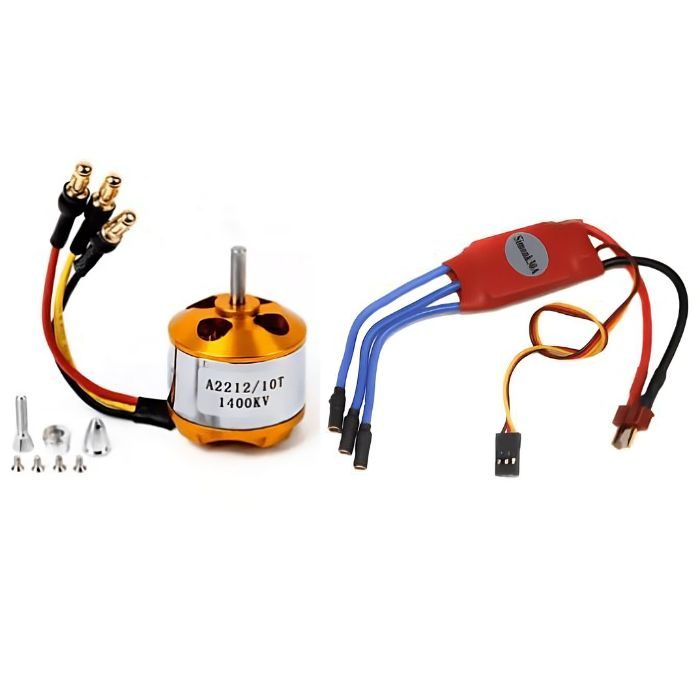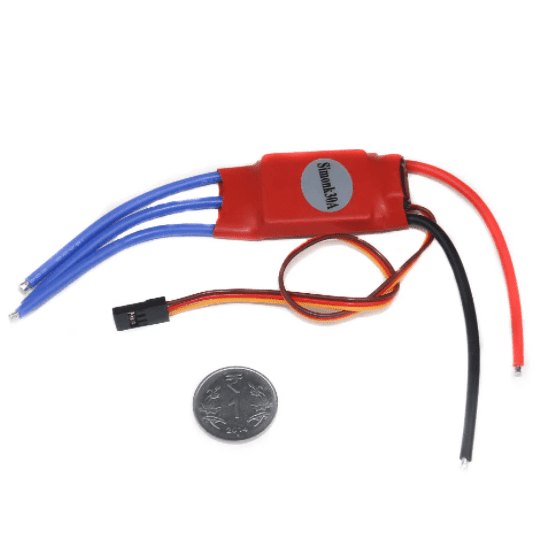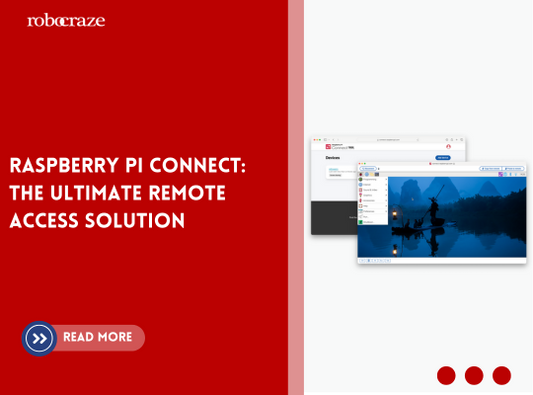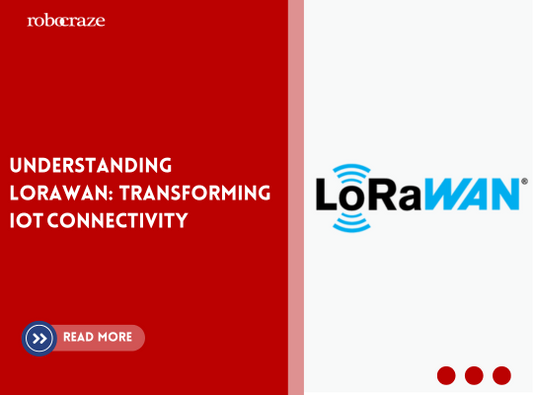Introduction
Choosing an Electronic Speed Controller (ESC) for your drone can be a daunting task. It is essential to consider the power needs of motors and battery types when selecting one. The ESC should support enough amps as instructed by motor specifications, while providing reliable speed control over all flight duration times with appropriate battery amperage ratings.
Also taking into account weight restrictions when opting for higher amp heated ESC’s - these may add too much extra mass if not chosen properly according to specific flying requirements or goals in mind. Additionally, certain flight controllers need specific firmware installed from their respective brands onto the controller, so make sure you look this up before hand! Finally finding the right balance between price & quality that fits within budget constraints will steer you towards making great decisions on which ESC works best for your DIY dream setup.
The Electronic Speed Controllers, much like the drone's propellers, motors, and flight controller, play an important role in allowing drone pilots to maneuver these flying machines with ease. More commonly known as the ESCs, these little circuit boards have been the center of attention in recent advances in drone technology. What is an ESC and why is it such an important component of drones? How exactly does it work?
What is an ESC?

The FPV Drone Electronic Speed Controller (ESC) on a drone is a hard-working, powerful component The flight controller and the motor are connected by the ESC. A quadcopter will require four ESCs because each brushless motor requires one. The ESC spins the brushless motor using the signal from the flight controller and the power from the battery. Although it sounds simple, it is anything but! Although some micro drones use brushed motors, the mini quads used in racing and freestyle rely on brushless motors. As the name implies, a brushless motor lacks contacts or “brushes” inside the motor. The brush serves as a commutator, which uses physical contact of the motor’s windings to spin the motor. Because they lack the brush, brushless motors use a different way to turn direct current (DC), the one-way flow of electrons, into a type of alternating current (AC). This is performed externally, through the use of an ESC.
read more : Drone Transmitter and Receiver Guide
Why do we use ESC?
A background on brushless motors:
While some toy drones and mini-drones still use cheap brushed motors, brushless motors are now used in the vast majority of consumer and prosumer-grade drones. Brushless motors are more efficient, quieter, and have a longer life span due to less wear and tear. Brushless motors can also be made smaller and lighter, which is a huge benefit for the new generation of drones with ultra-portable designs.
Brushless motors rely on a series of coils along a central stator to create a magnetic field that drives continuous rotation, as compared to brushed motors, which rely on the rotor's contact with a power supply to create a magnetic field that drives continuous rotation. The stator is surrounded by a rotor that is lined with permanent magnets. The number of coils in a brushless motor varies depending on the design, but the principle of operation remains the same.
Current is supplied to each coil one (or several) at a time, thus creating a magnetic field that drives the rotor to rotate. The current supply is switched to the next coil in the series to maintain this rotation. The beauty of this process is that the rate at which the current supply switches from one coil to the next can directly influence the rate at which the motor rotates. Thus, By controlling signal switching, a drone motor and propeller can be made to rotate at the exact speed required to carry out the pilot's commands.
read more : Drone Part List
How does an ESC work?

The ESC (Electronic speed controller) is a brushless DC motor speed controller. The ESC requires a PWM signal to vary the speed of a BLDC motor. The ESC is available in different variants and power ratings. The ESC is fed with a voltage of 11.1 V DC from a LiPo battery. The control signal is provided from the drone flight controller boards. The signal PWM (Pulse width modulation) is provided to the signal wires of the ESC. The flight controller board measures certain parameters of the drone. Such as pitch, yaw, roll, etc. The ESC generates a 3-phase alternating current to drive high current BLDC motors.
read more : Getting started with a Quadcopter
Factors to be considered while choosing an ESC for your drone:
1. Current Rating
The current rating or ampere rating is the first thing to be considered when choosing an ESC. When the motors spin, they draw current; if you draw more current than your ESC can handle, it will overheat and eventually fail. You should decide the current rating of the ESC after selecting a suitable motor size for your requirement.
Mostly, three things can increase the current draw of your ESC,
- High KV ratings of the motor
- Larger propellers (length & pitch)
- Larger motor size (stator width & height)
There are 2 current ratings of ESC and they are continuous and burst. The continuous current rating indicates the maximum continuous current which ESC can handle safely. The burst rating means the maximum current that the ESC can handle for a short period (e.g. 10 seconds) without damaging the ESC itself.
2. Input Voltage Rating
The voltage rating of an ESC is the maximum amount of voltage that your ESC can handle safely. Some of the ESCs support 3S-4S battery voltage, while others can support 6S battery voltage. Check that they are compatible with the voltage of the LiPo battery. Excessively high voltage used to power your ESC will damage both the ESC and the motor.
3. Weight and Size
The weight and size of an ESC are dependent on ESC's current rating. It is challenging to make ESCs with lighter and smaller sizes without losing their performance and effective cooling. Mostly, single standalone ESCs are designed with a weight of around 4 grams to 6 grams and the 4 in 1 ESC weighs around 12 grams to 15 grams. Generally, the lighter ESCs have lower heat dissipation, which leads to concerns about overheating.
4. ESC Firmware
ESC firmware is the software that is running on each ESC. It determines the performance of ESC. The ESC firmware gives information on the protocols that are supported as well as the configuration interface. There are different types of ESC firmware are available,
- BLHeli ESC.
- BLHeli_S ESC
- SimonK ESC
- KISS firmware
- BLHeli_32
Out of these, BLheli firmware and Simonk firmware are open sources and KISS firmware is closed source meaning it can run with only KISS ESC.
5. Connection of ESC with motor
ESC uses a LiPo battery to power up. The signal receives from the flight controller controls the speed of the motor. A Brushless ESC has 3 wires which directly plug or gets soldered to the 3 wires of the motor. The below image shows the single standalone ESC with a LIPO battery, RC receiver, and brushless motor.
6. ESC Protocols
Protocols are like the operating system of ESC. They control how quickly the ESC and the FC (flight controller) communicate, which plays a major role in the handling and performance of a quadcopter.
Here is a list of current protocols used on quadcopters, from oldest to latest:
- Standard PWM
- Oneshot125
- Oneshot42
- Multishot
- DShot
- ProShot
read more : Where to Buy Drones in India
7. ESC Processors
Most ESC uses the processor from ATMEL, Silabs, and ARM Cortex. All these processors have different, features, and specifications and support different firmware.
- ATMEL 8-bit is compatible with both SimonK and BLHeli firmware
- SILABS 8-bit is compatible with BLHeli or BLHeli_S only
- ARM Cortex 32-bit (e.g. STM32 F0, F3, L4) can run with BLHeli_3
Top ESC for Quadcopters:
Check out best ESC for your drone.
Conclusion
In this blog post, we have learned that ESCs are the unsung heroes of drone technology, responsible for smooth and stable flight experiences. Understanding what an ESC is, why we use it, and how it works is crucial for any drone enthusiast. When selecting an ESC for your drone, keep in mind factors such as the size and weight of your drone, the power requirements of your motors, and the desired flight characteristics. By choosing the right ESC for your Drone, you can take your drone to new heights, both figuratively and literally!
If you appreciate our work don't forget to share this post and leave your opinion in the comment box.
Please do check out other blog posts about Popular electronics
Check out other related blog posts about Drones: Drone transmitter and receiver , Drone Part List , Drone motors and Getting started with a Quadcopter
Make sure you check out our wide range of products and collections (we offer some exciting deals!)












